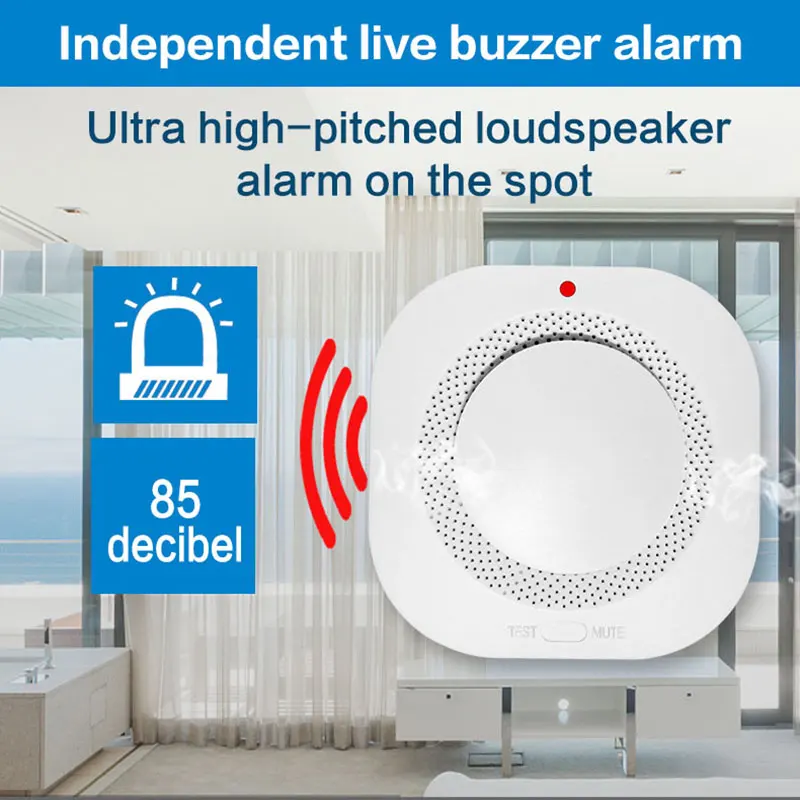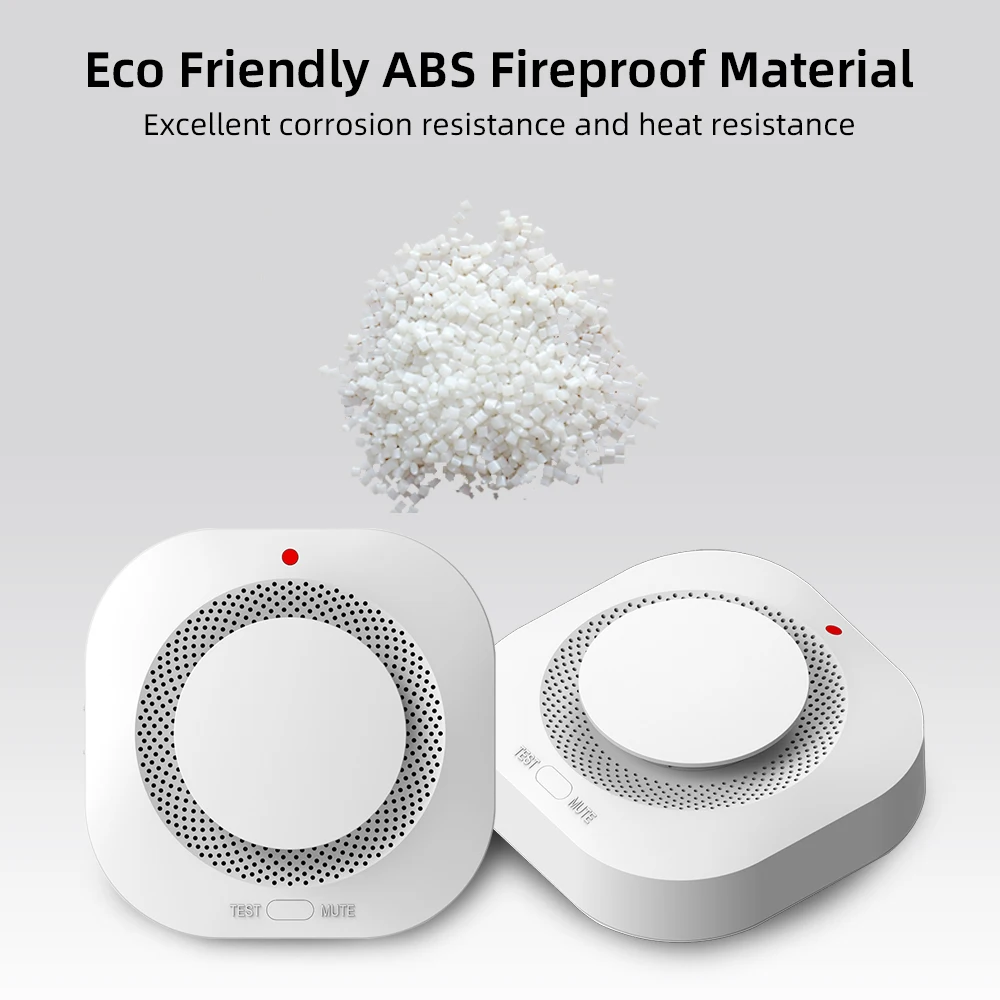Introduction to Smoke Alarm Beeping
Smoke alarms are critical for home safety. They alert us to danger, signaling a chance to evacuate. When a smoke alarm emits 3 beeps every 10 minutes, it’s signaling for your attention. This pattern of beeping is not random. It indicates a specific issue that requires immediate action. Understanding the causes of these beeps is crucial. It helps ensure the alarm functions properly and keeps you safe. In this article, we will explore common causes of 3 beeps every 10 minutes. We will discuss battery issues, end-of-life signals, and device malfunctions. We will also look at the influence of environmental factors such as heat, humidity, and airflow. A step-by-step guide will show you how to reset your smoke alarm. Proper maintenance tips will help in ensuring its efficiency. Lastly, we’ll weigh the pros and cons of upgrading to hard-wired smoke alarms. With expert advice, you’ll know when to seek professional help. Let’s keep our homes safe by maintaining functional smoke detectors.

Identifying the Causes of 3 Beeps Every 10 Minutes
When your smoke alarm emits 3 beeps every 10 minutes, it’s crucial to address it immediately. This consistent yet spaced-out beeping can signify several issues: from battery problems to device malfunctions or environmental factors affecting the alarm’s sensors. Below, we delve into the common causes and suggest effective solutions.
Battery-Related Issues and Solutions
Most often, when a smoke alarm beeps in such a pattern, it indicates a battery issue. This could be due to the battery needing replacement or not being installed correctly. Here are steps to resolve battery-related beeps:
- Replace the battery: Use batteries of the recommended size and brand.
- Install properly: Ensure the battery is installed correctly, and the battery compartment is securely closed.
- Test the smoke alarm: Use the test button to confirm the alarm is working once the new battery is in place.
End of Life Signals: When to Replace Your Smoke Alarm
Smoke alarms have a limited lifespan. A typical smoke alarm lasts about 8 to 10 years. If your smoke alarm beeps persistently despite battery changes, it may have reached its end of life. Consider these points:
- Check the manufacture date: Look at the date on your alarm or check your purchase records.
- Replace if older than 10 years: If the alarm dates back more than a decade, replace it.
Malfunction Indicators: Device or Electrical Problems
Apart from battery issues, internal malfunctions or electrical problems can cause intermittent beeps. Key indicators include:
- Check wiring (for hard-wired systems): Ensure connections are secure and undamaged.
- Look for visible signs of damage: Inspect your smoke alarm for any signs of physical damage or wear and tear.
- Consult a professional: If troubleshooting doesn’t stop the beeping, it might be an electrical issue, necessitating a professional examination.
Environmental Factors: Heat, Humidity, and Airflow
Environmental factors can significantly affect smoke alarm functionality. Beeps might not always indicate smoke but could be triggered by temperature fluctuations or high humidity. To mitigate this:
- Relocate your smoke alarm: Keep it away from kitchens, bathrooms, and windows.
- Regular maintenance: Clean the alarm sensors regularly to avoid dust or insect interference.
- Adjust placements regarding HVAC systems: Ensure smoke alarms are not too close to heating or cooling vents.
By understanding and addressing these causes effectively, you ensure that your smoke alarm efficiently serves its purpose and enhances safety in your home.

Step-by-Step Guide to Resetting Your Smoke Alarm
Resetting your smoke alarm can help resolve the issue of 3 beeps every 10 minutes. Here is a simple, step-by-step guide to reset your smoke alarm effectively and ensure it’s functioning correctly:
- Turn off Power: First, ensure safety by turning off power to the unit at your circuit breaker.
- Remove the Smoke Alarm: Carefully detach the smoke alarm from its mounting bracket.
- Disconnect and Inspect: Disconnect the smoke alarm from its power source. Check for any visible damage or dust accumulation.
- Press the Test Button: Hold down the test button for about 15 to 20 seconds. This action drains any residual charge and resets the alarm.
- Reconnect and Mount: Reconnect the power source and reattach the smoke alarm to its bracket.
- Restore Power and Test: Turn the power back on and press the test button again. Listen for a beep which confirms the alarm is working.
By carefully following these steps, you can reset your smoke alarm and ensure it is ready to alert you to any smoke or fires.
Maintenance Tips: Ensuring Smoke Alarm Efficiency
Maintaining your smoke alarm is crucial for home safety. Regular checks and cleanings will ensure it works well. Let’s look at key maintenance tasks that can keep you safe.
Regular Battery Checks and Replacement
For smoke alarm efficiency, check and replace batteries often:
- Test monthly: Press the test button to ensure the alarm sounds.
- Change batteries yearly: Replace them every year, or when you hear a low battery beep.
- Choose the right batteries: Use the manufacturer’s recommended battery type only.
Cleaning and Preventing Dust Accumulation
Dirt can cause false alarms. Keep your smoke alarm clean by:
- Dusting regularly: Use a soft brush to gently remove dust.
- Vacuuming smoke alarms: Vacuum the cover and sensors yearly.
- Avoiding open windows: This can prevent dust and bugs from getting inside.
Proper Installation and Location of Smoke Detectors
Install smoke alarms correctly to avoid false alerts:
- Keep away from kitchens: Install alarms at least 10 feet from cooking appliances.
- Place high on walls or ceilings: This ensures the alarm detects smoke fast.
- Avoid humidity and drafts: Don’t place near bathrooms or vents to prevent false alarms.
Follow these maintenance tips to keep your smoke alarm beeping only when needed. Regular maintenance helps avoid the annoyance and dangers of false alarms or undetected fires.

Upgrading to Hard-Wired Smoke Alarms: Pros and Cons
Upgrading to hard-wired smoke alarms has its benefits and drawbacks. Understanding both can help you make an informed decision for your home safety.
Pros of Hard-Wired Smoke Alarms
- Interconnected system: When one alarm detects smoke, all alarms sound off. This provides quicker alerts for the entire home.
- No hassle with batteries: Hard-wired alarms often have battery backups, but primarily run on your home’s electricity. This reduces battery checks and replacements.
- Professional installation: Ensures correct and secure placement, reducing the chances of malfunction due to incorrect setup.
Cons of Hard-Wired Smoke Alarms
- Installation cost: Professional installation can be expensive compared to simply placing battery-operated alarms.
- Power outages: Despite having battery backups, the initial confusion during a power cut can be a challenge.
- Maintenance: Hard-wired alarms still require regular cleaning and testing to ensure they function correctly.
Evaluating these pros and cons is vital. Your home’s size, layout, and your family’s safety needs can determine the best smoke alarm system for you. Always consult a professional for advice tailored to your specific circumstances.
Expert Advice: When to Seek Professional Help
Dealing with 3 beeps every 10 minutes from your smoke alarm can be complex. Sometimes, simple fixes like replacing batteries or cleaning don’t resolve the issue. Here are situations when you should consider professional help:
- Persistent Beeping despite Troubleshooting: If the alarm continues to beep after checking batteries and cleaning, professional assistance is crucial. It may indicate deeper electrical issues.
- Wiring Issues with Hard-Wired Alarms: Handling electrical wiring should be left to professionals due to safety risks.
- Installation of New Smoke Alarms: For correct installation of hard-wired smoke alarms, hiring a professional ensures safety and functionality.
- Smoke Alarm Reaches End of Life: Professionals can advise on the best replacement model and handle proper disposal of the old unit.
Seeking expert help ensures your smoke alarm functions optimally and keeps your home safe.
Conclusion: The Importance of Functioning Smoke Detectors
Functioning smoke detectors are crucial for home safety. They provide early warnings during a fire, allowing for timely evacuation. Ensuring your smoke alarms are working optimally prevents potential injuries and fatalities. Regular maintenance and addressing beeping signals promptly are essential. By following the guidelines in this article, you can maintain your smoke alarm’s efficiency. Remember, a malfunctioning smoke detector can compromise your safety. Upgrade to hard-wired systems for more reliability, although they come with their own pros and cons. Consider professional help for installation or troubleshooting complex issues. Functional smoke detectors are your first line of defense in fire emergencies, proving essential in safeguarding your household.


